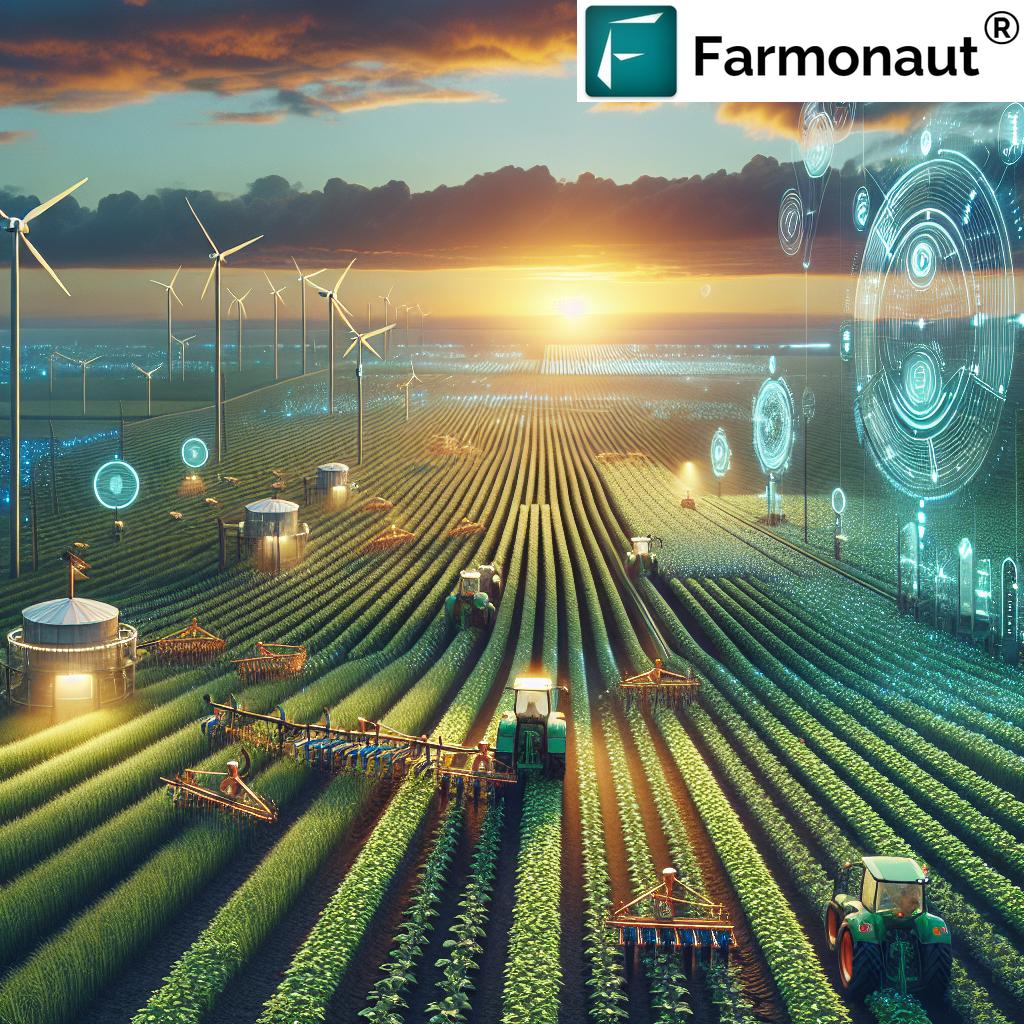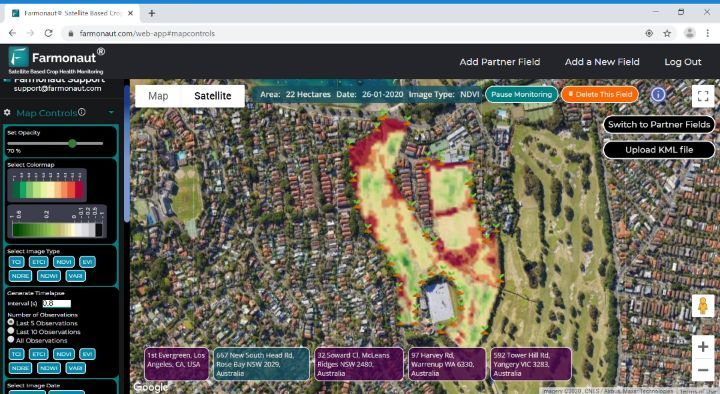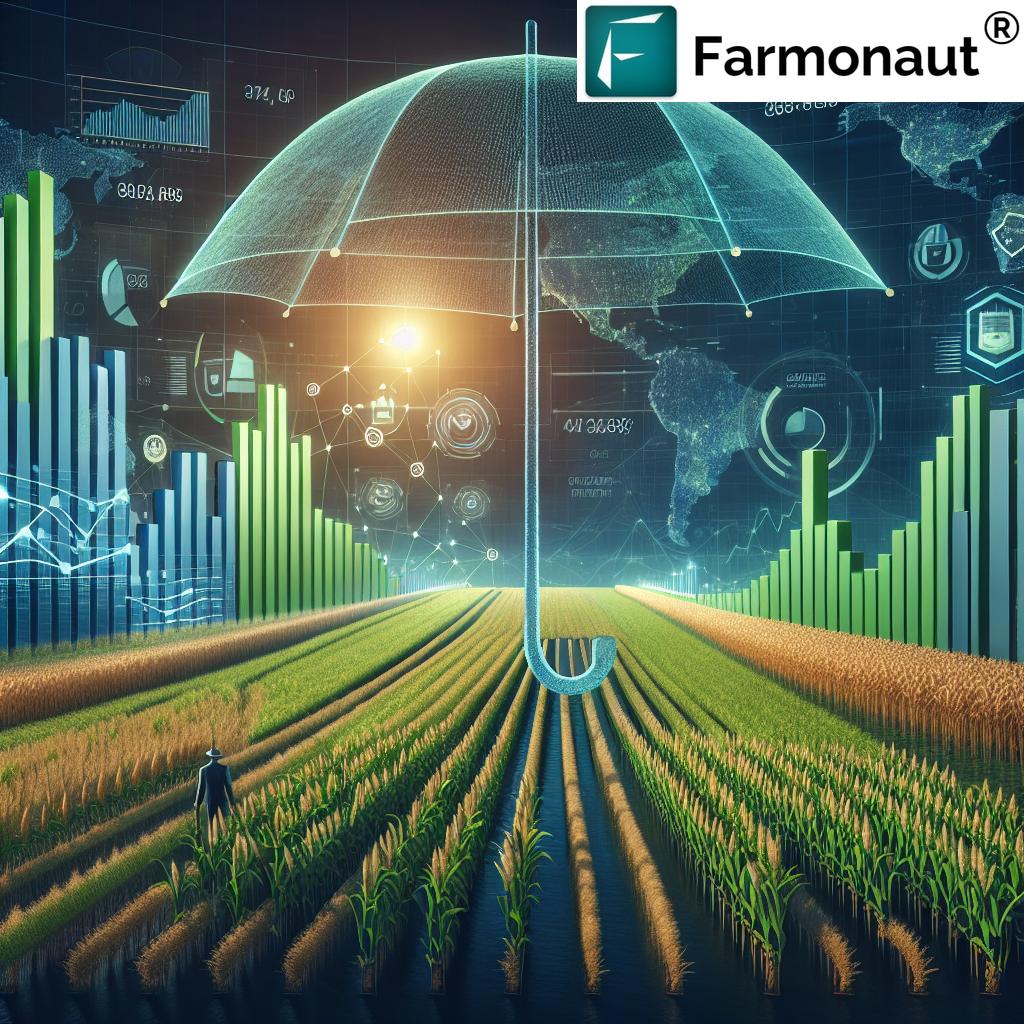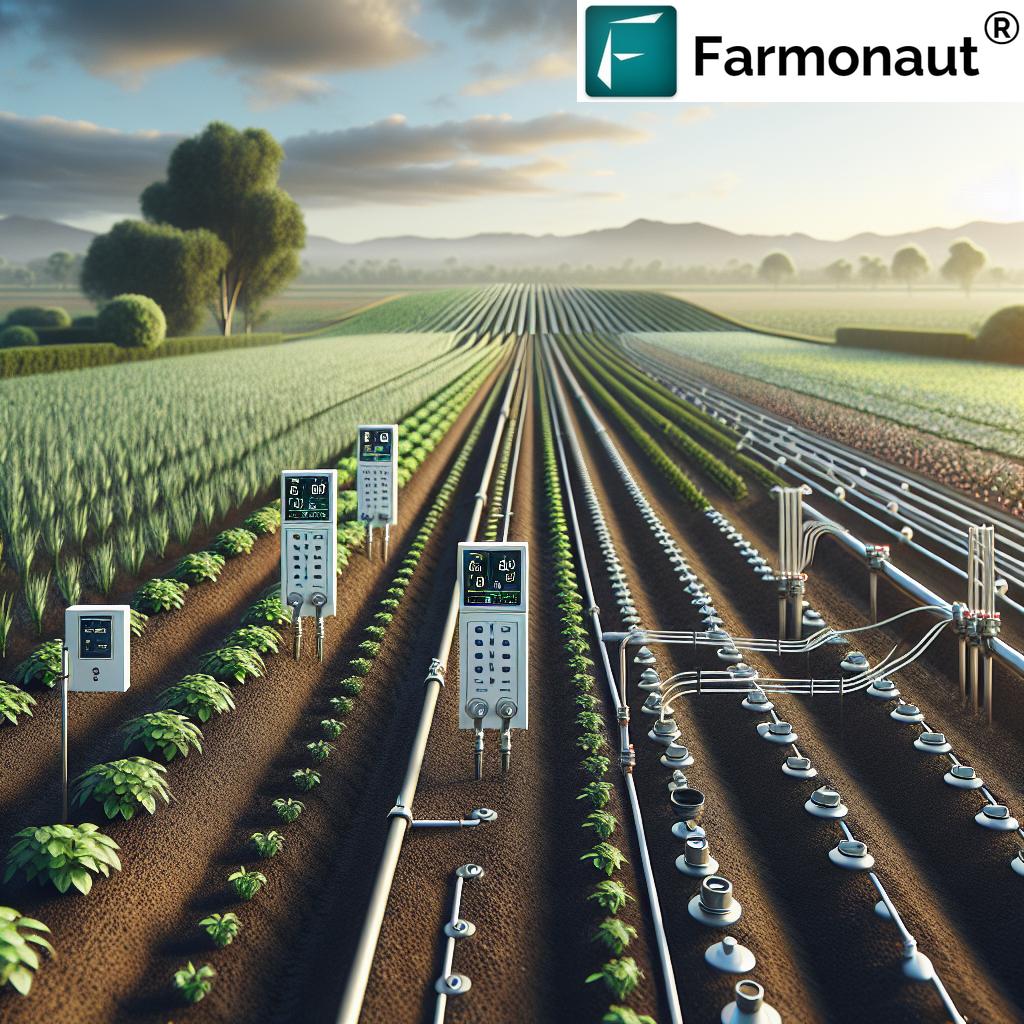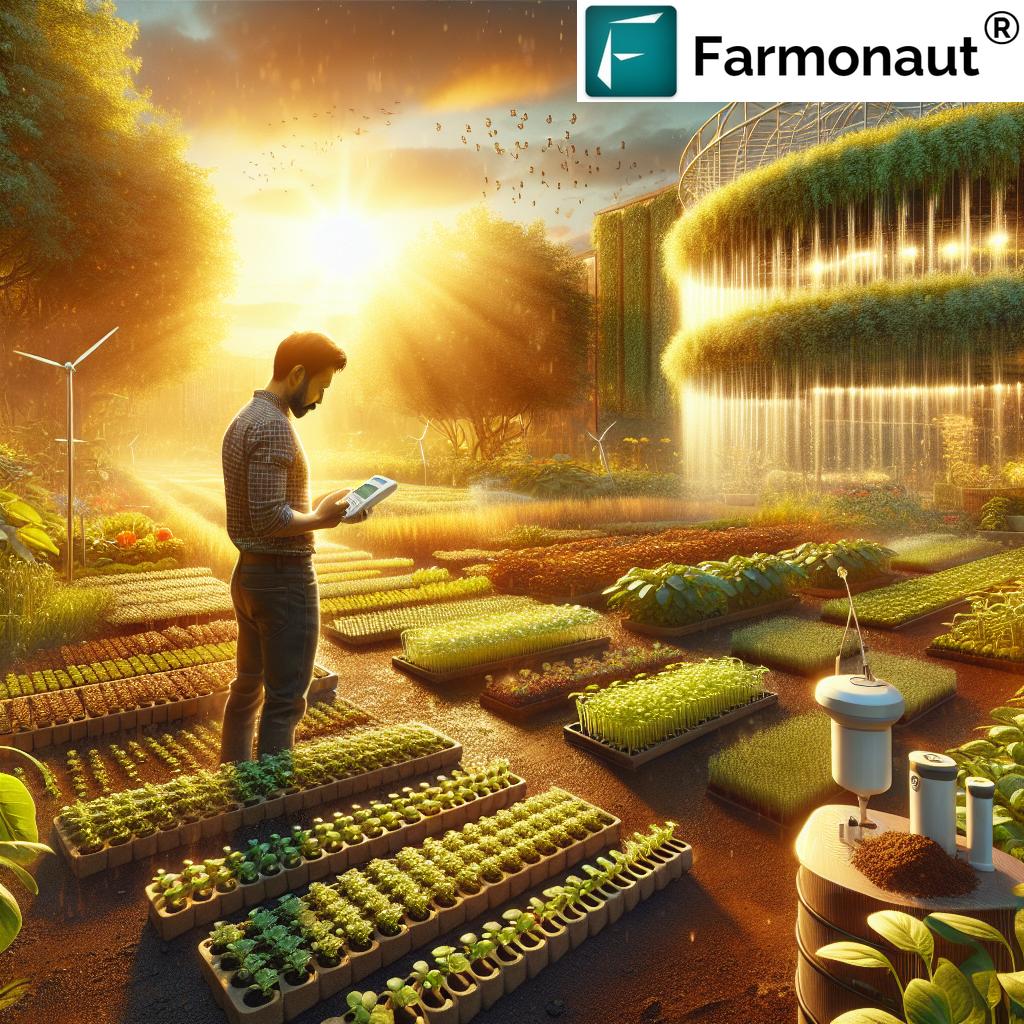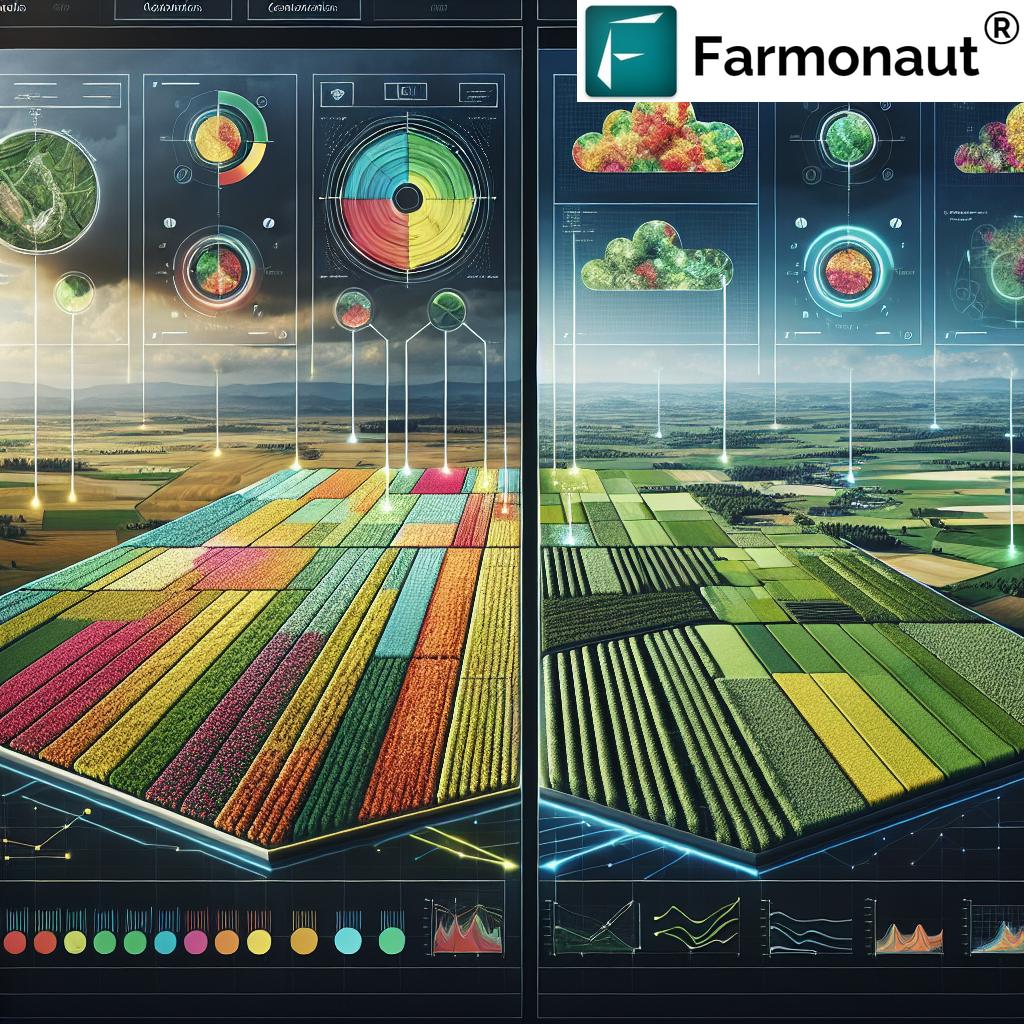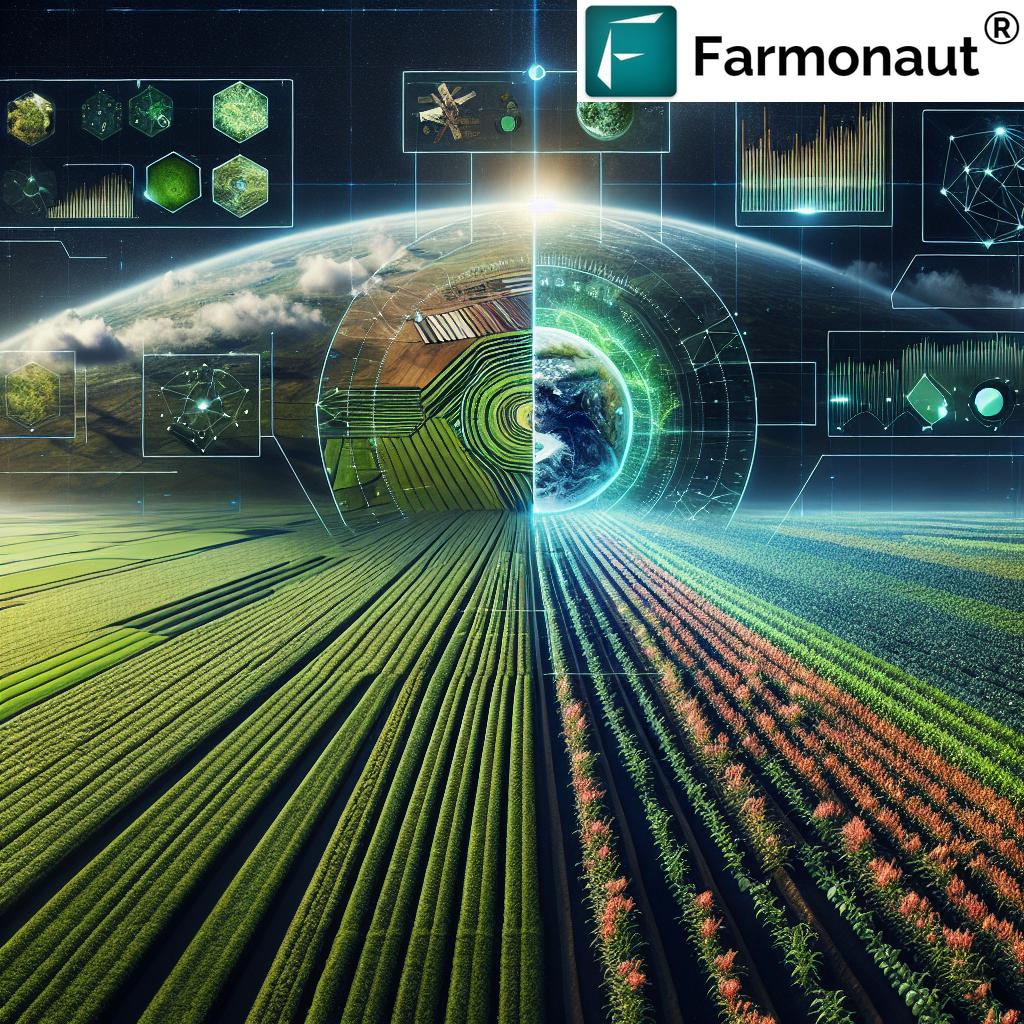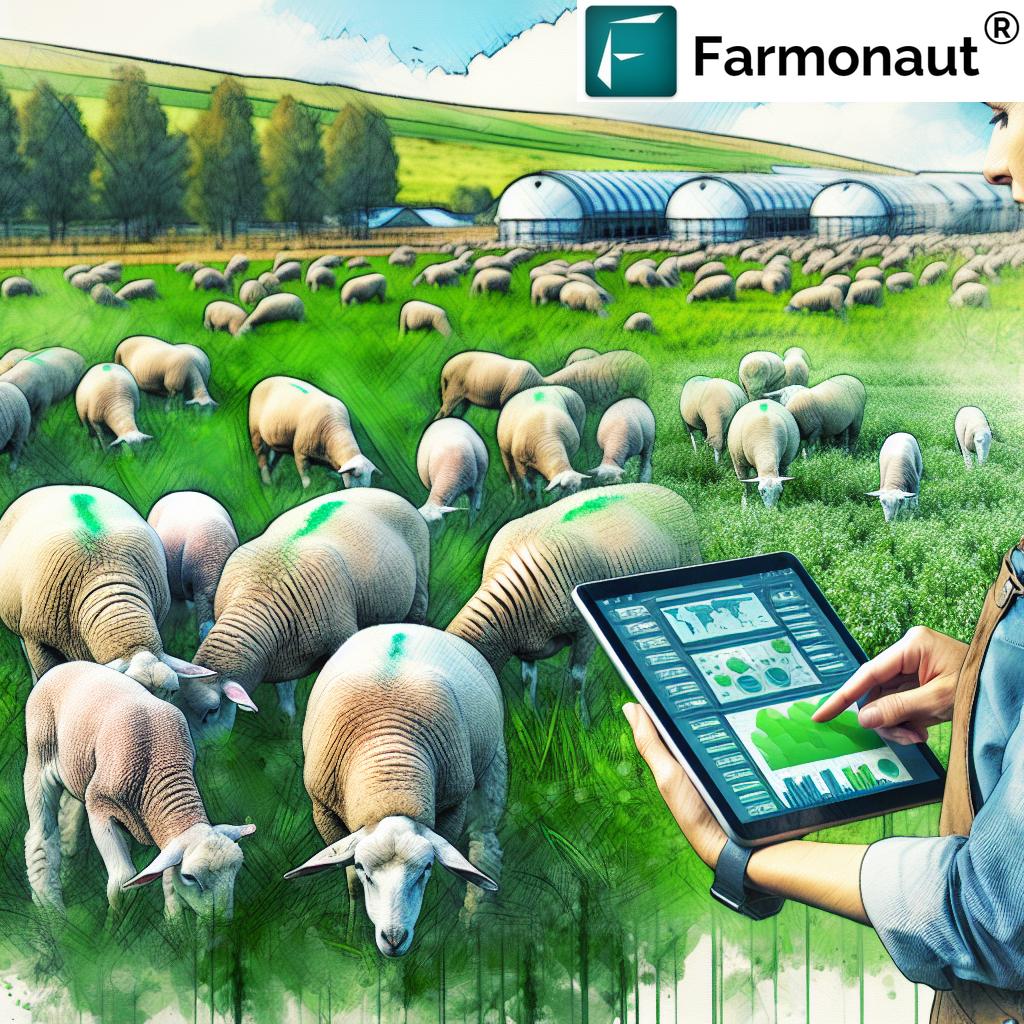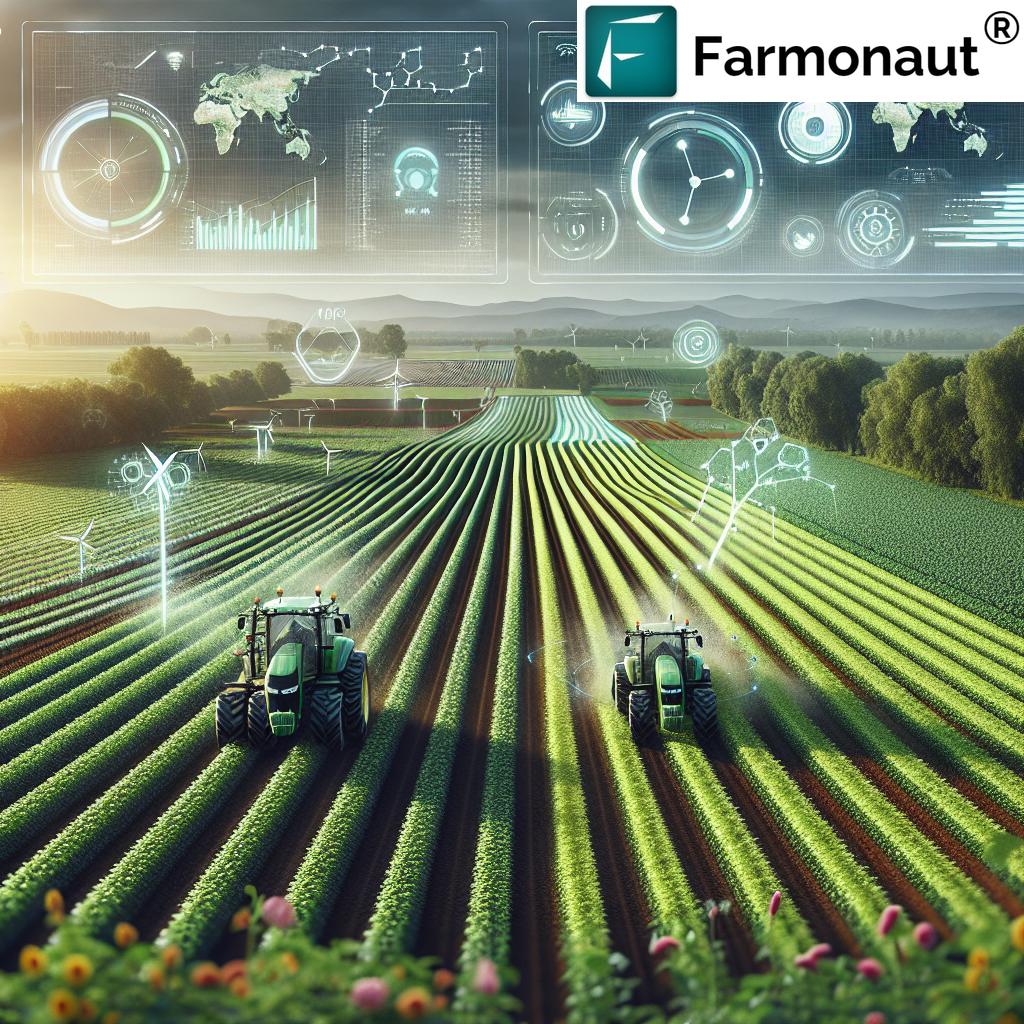Smart Agriculture Technology: 7 Game-Changing Farming Hacks
“Precision farming can reduce fertilizer use by up to 30%, optimizing resources and minimizing environmental impact.”
Introduction: Smart Agriculture & The Precision Farming Revolution
Smart agriculture is redefining the way we produce food, elevating traditional practices with advanced technologies like IoT, artificial intelligence (AI), data analytics, robotics, and precision farming. As global populations swell and climate change pressures intensify, the need for efficient, sustainable, and productive agricultural practices has never been greater. Through the integration of agriculture IoT solutions, smart sensors, automated farm equipment, and sophisticated analytics tools, farmers are now able to make data-driven decisions, optimize resources, and respond proactively to challenges in soil fertility, pest management, irrigation, and crop health.
We are now in an age where agricultural data is as valuable as seeds themselves, fueling a transformation that impacts every stakeholder in the food chain—from smallholder farmers to large-scale agribusinesses, governments, and consumers. In this comprehensive guide, we will explore the top seven smart agriculture technology hacks powering this revolution. We’ll also unpack the core concepts and practical applications that are making a difference in resource management, efficiency, environmental sustainability, and global food security.
Whether you’re an individual grower, agricultural entrepreneur, or policy-maker, understanding the breadth and depth of smart agriculture, precision farming technologies, and data-driven practices is essential for long-term success. Let’s dive into the world of farming innovation!
Key Technologies in Smart Agriculture
Smart agriculture technology is built on a foundation of interconnected systems, devices, and software platforms, each addressing critical farming challenges. Let’s explore some of these core technologies and how they interact to boost efficiency, sustainability, and crop health:
- Sensors & Agriculture IoT Solutions: Low-power, high-accuracy sensors monitor soil moisture, temperature, humidity, and nutrient levels. These IoT-enabled devices collect comprehensive agricultural data in real time, empowering us to monitor conditions remotely, optimize irrigation, and manage environmental variables for robust crop growth.
- Drone Technology in Agriculture: Drones, fitted with multispectral sensors, provide aerial imagery for large area coverage and crop health assessment. The ability to detect pest infestations, map growth stages, and monitor disease from above brings precision and speed to decision-making processes.
- Autonomous Tractors & Automated Farm Equipment: AI-powered machines now perform plowing, seeding, weeding, planting, and harvesting with minimal human intervention, reducing labor dependency, and ensuring tasks are executed with pinpoint accuracy.
- Artificial Intelligence in Agriculture & Machine Learning Algorithms: AI and ML are used to analyze data, forecast weather, predict pest outbreaks, optimize planting schedules, and aid proactive decision-making—all while continuously learning and improving results for each field and season.
- Cloud Computing & Data Platforms: The ability to store and process vast amounts of agricultural information securely in the cloud allows farm managers, agribusinesses, and researchers to collaborate and leverage powerful farm data analytics tools from anywhere.
- Smart Irrigation Systems: These systems utilize real-time sensor readings and weather data to adjust watering schedules and volumes automatically. The outcome? Reduced water use and optimal soil moisture for every crop stage.
- Blockchain-based Traceability: Ensures end-to-end transparency in the supply chain, allowing us to trace the journey of crops from the farm to the market.
“Smart sensors monitor soil moisture 24/7, increasing crop yields by as much as 20% in some farms.”
Comparative Innovations Impact Table: 7 Essential Smart Agriculture Technologies
| Technology Name | Primary Function | Estimated Efficiency Gain (%) | Estimated Resource Savings | Implementation Cost | Sustainability Impact |
|---|---|---|---|---|---|
| Sensors & Agriculture IoT Solutions | Monitor soil, crop, and climate in real time | 15-25% | Water: 20-35%, Fertilizer: up to 30% | Low to Medium | High—Reduces soil and water wastage |
| Drone Technology in Agriculture | Aerial surveillance, crop health assessment | 20-30% | Pesticides: 10-20%, Labor: 15% | Medium | Medium—Precision application cuts chemicals |
| Autonomous Tractors & Automated Equipment | Robotic plowing, seeding, harvesting | 25-35% | Labor: 30-50%, Fuel: 10-15% | Medium to High | High—Minimizes emissions, optimizes energy |
| AI & Machine Learning Algorithms | Predict pests, optimize planting & management | 15-30% | Fertilizer: 10-20%, Water: 15-25% | Medium | High—Reduces chemical dependency |
| Cloud Computing & Farm Data Analytics | Centralize, process, share agricultural data | 10-20% | Time: 15%, OPEX: 10% | Low | Medium—Speeds collaboration, reduces waste |
| Smart Irrigation Systems | Automate water delivery via sensors & schedules | 20-40% | Water: 30-50% | Medium | High—Conserves water, maintains health |
| Blockchain-based Traceability | Supply chain transparency, fraud protection | 10-15% | Trust: High, Loss: Reduced | Low | High—Enhances accountability, reduces waste |
Smart Agriculture Technology: 7 Game-Changing Farming Hacks
Unlocking the full potential of smart agriculture hinges on leveraging these seven transformative hacks:
-
1. Sensor-Based Precision Monitoring with Agriculture IoT Solutions
Harness IoT devices—smart sensors that monitor soil moisture, pH, temperature, and humidity at granular intervals, 24/7. Through continuous, real-time data, we can fine-tune irrigation, fertilization, and resource usage to minimize waste and maximize crop yields. This reduces costs and environmental impact, supporting sustainable farming practices on every scale.
Farmonaut’s satellite-based crop health monitoring provides fieldwide insights, helping us diagnose problems early and take proactive measures—no equipment setup required!
-
2. Drone Technology in Agriculture for Aerial Crop Intelligence
Drones capture multispectral aerial imagery, allowing us to assess crop health, detect stress, identify pest infestations, and monitor field variability. We can see subtle differences in vegetation that aren’t visible to the human eye, enabling timely interventions and improved yields. Automated drones also help map, scout, and monitor large or hard-to-reach fields with unprecedented speed and accuracy.
-
3. Automated Farm Equipment: Robotic Seeding, Weeding & Harvesting
Autonomous tractors, planters, and robotic weeders perform precise, repetitive field tasks—plowing, planting, and even selective weeding—with minimal labor. Using GPS, AI, and robust automation, these machines execute tasks on schedule without fatigue, errors, or excessive input use. The result: lower labor costs, reduced chemical requirements, and robust operational efficiency.
Explore fleet and resource management solutions to optimize agricultural machinery, logistics, and routes for larger agribusinesses.
-
4. Data-Driven Insights with Farm Data Analytics & Cloud Computing
By collecting field data from sensors, drones, and equipment, uploading it to cloud-based analytics platforms, and accessing advanced dashboards, we can analyze crop performance, soil health, weather patterns, and forecast management needs. These insights empower us to create data-backed farm management strategies, reduce waste, and boost productivity.
Farmonaut’s carbon footprint tracking tools also allow us to monitor our environmental impact and measure sustainability initiatives in real time.
-
5. AI and Machine Learning for Proactive Crop Health Monitoring & Forecasting
Artificial intelligence in agriculture excels at spotting patterns across huge datasets—detecting early-stage diseases, predicting pest outbreaks, and even forecasting weather-induced crop risks. By leveraging algorithmic models built on years of agricultural data, we can intervene early and optimize input schedules, reducing losses and improving food security.
Farmonaut’s Jeevn AI advisory system delivers real-time, personalized recommendations for every field and farmer, maximizing efficiency and long-term resilience.
-
6. Smart Irrigation Systems for Water Efficiency
Automated, sensor-driven smart irrigation systems use real-time soil moisture and weather data to adjust schedules and water volumes. This method delivers water directly to roots only as needed, reducing overwatering and preventing soil erosion. On farms where water scarcity is a challenge, such systems are a game-changer.
-
7. Blockchain-Based Supply Chain Traceability
Blockchain technology in agriculture provides tamper-proof records of each crop’s journey from field to consumer, greatly enhancing transparency and accountability. This solution—ideal for food processing, cotton, or organic markets—builds consumer trust, prevents fraud, and streamlines certification and compliance.
Discover how Farmonaut’s traceability solutions assure accountability and boost brand reputation across global markets.
Real-World Applications of Smart Agriculture Technology
How Are Innovations Improving Farming Practices, Crop Health, and Sustainability?
Applications of smart agriculture and precision farming technologies bring sweeping change to every operation:
- Precision Irrigation: Continually monitors soil moisture and weather data to deliver the right amount of water. Result: conserves water, prevents erosion, and maintains optimal crop health. Explore plantation and forest advisory solutions for present and future irrigation management.
- Crop Health Monitoring: Remote sensing and multispectral imagery (NDVI, EVI, and true color indices) allow us to detect early-stage disease, nutrient deficiency, or pest infestations before major losses occur.
- Livestock Tracking and Management: Wearable IoT devices monitor animal behavior, temperature, and health metrics—reducing the risk of outbreaks while improving feeding and productivity.
- Automated Seeding and Weeding: Robotic systems seed with precision and target weeds with minimal chemical input, promoting cleaner, more sustainable agricultural fields.
- Agrivoltaics: Integrates solar panels with farmland, producing clean energy while providing crops shade, cooling, and lower water requirements—ensuring a win-win for yield and sustainability.
Farmonaut: Empowering Farmers with Advanced Smart Agriculture Solutions
At Farmonaut, we are committed to democratizing precision farming technologies and agriculture IoT solutions for farmers and agribusinesses worldwide. Our satellite-based farm management platform is accessible via Android, iOS, browser, and API integrations—making scalable, high-impact tech available to everyone.
What sets us apart:
- Comprehensive Satellite-Based Crop Health Monitoring: We provide data-driven insights (e.g., NDVI, soil moisture, pest and water stress) to monitor growth, identify risks early, and make informed decisions. No hardware investment or on-ground installation needed!
- AI-Based Jeevn Advisory System: Harness personalized, real-time farm advice—from weather forecasts to seeding plans—by analyzing satellite data for style=”color:#034d5c;”>optimized yields, efficiency, and reduced losses.
- Blockchain-Enabled Traceability: Secure, end-to-end product journey tracking builds supply chain trust and transparency.
- Fleet & Resource Management: Monitor, schedule, and optimize farm machinery for lower operational costs and safer, efficient equipment use.
- Carbon Footprint Tracking: Monitor farm emissions in real time for compliance and true sustainability impact.
- Affordable Subscription Model: Flexible pricing ensures every farmer, cooperative, enterprise, or government can harness state-of-the-art technology without breaking the bank.
- API Access: Seamlessly integrate satellite and weather data into your systems, or consult our developer documentation for custom solutions.
We offer solutions for crop loan and insurance verification, large-scale farm management, and more—ensuring everyone in the food ecosystem benefits from unbiased, cutting-edge technology.
Benefits of Embracing Smart Agriculture
By adopting smart agriculture technology, we unlock measurable improvements at every farm, field, and agribusiness:
- Resource Optimization: Smart analytics ensure we deliver the precise amount of water, fertilizer, and energy required—reducing waste and maximizing productivity.
- Environmental Sustainability: Automated equipment, improved schedules, and targeted input significantly minimize chemical runoff and carbon emissions.
- Increased Productivity: Automation and real-time decisions consistently raise crop yields and streamline resource use, directly addressing global food security challenges.
- Labor Efficiency: Routine, repetitive tasks shift from humans to autonomous machines, mitigating labor shortages and freeing skilled workers for value-added roles.
- Transparency and Trust: Blockchain-based systems provide consumers and institutions with clear, reliable data from farm to table.
- Improved Access to Financing: Objective data empowers banks and insurers to confidently verify loans and insurance claims, offering farmers improved access to vital capital.
- Regulatory Compliance: With data-backed records, we can more easily comply with evolving environmental and food safety regulations.
Challenges and Key Considerations in Precision Farming
Despite its transformative benefits, smart agriculture implementation comes with its unique challenges:
- High Initial Costs: While solutions like Farmonaut’s satellite-based platform keep hardware costs low, others (like on-ground sensors and robotics) can be an investment hurdle for smaller farms.
- Data Management & Security: The volume and complexity of agricultural data demand robust, secure systems for storage, processing, and analysis—along with vigilance for data privacy.
- Technology Adoption: Farmers may be hesitant or lack training to use new technologies. Dedicated outreach, support, and intuitive design are key to building confidence and driving adoption.
- Connectivity Issues: In remote rural areas, lack of internet infrastructure could limit the functionality of cloud and IoT platforms.
- Integration Complexity: Combining multiple technology solutions—sensors, AI, drones, data analytics—requires thoughtful integration and sometimes customization for each agricultural environment.
Smart selection of solutions, clear ROI, and capacity-building for end-users are essential to overcoming these challenges.
The Future Outlook: What Lies Ahead for Smart Agriculture?
With rapid advancement in AI, machine learning, robotics, and IoT, the future of smart agriculture promises even greater efficiency, sustainability, and productivity gains. Key developments will include:
- Integrated Data Platforms: Cross-platform, interoperable analytics will allow seamless collaboration between devices, stakeholders, and sectors—enabling holistic decision-making across fields, regions, and markets.
- Genomics and Predictive Breeding: AI-driven crop breeding tools will increasingly deliver tailored varieties matched to climate, soil, and market needs.
- IoT Expansion: Sensor proliferation and low-power data networks will bring every corner of the farm—cattle, tractors, crops—into a unified, smart control ecosystem.
- Edge Computing: Processing data locally (on the device or farm) before uploading to the cloud will reduce delays and bandwidth needs, enabling even remote or bandwidth-constrained farms to reap digital dividends.
- Climate Adaptation: Technology will become central to managing weather extremes, pest pressure, and variable global markets.
- Farm-to-Consumer Digital Traceability: Blockchain and AI will connect every stakeholder with verifiable information about their food’s origin, journey, and sustainability profile.
Unlocking this bright future requires ongoing collaboration, education, and investment. But the potential rewards—food security, environmental harmony, and thriving rural communities—make smart agriculture technologies more vital than ever.
Frequently Asked Questions (FAQ) – Smart Agriculture Technology
1. What is smart agriculture?
Smart agriculture is the application of advanced technologies—such as IoT, artificial intelligence, robotics, cloud analytics, and automation—to farming practices. It allows farmers to make data-driven decisions, monitor crops and soil remotely, increase efficiency, reduce waste, and improve sustainability.
2. How do sensors and IoT devices benefit farms?
Sensors and IoT devices monitor real-time parameters such as soil moisture, temperature, humidity, and crop growth. This granular information enables optimized irrigation, fertilizer use, and early detection of problems, helping farmers improve yields and minimize input and environmental cost.
3. What is AI’s role in agriculture?
Artificial intelligence in agriculture powers predictive insights: forecasting pest outbreaks, disease risks, weather changes, and optimizing planting schedules or resource allocation. Machine learning algorithms analyze vast data to help us act proactively.
4. How do smart irrigation systems save water?
Smart irrigation systems use soil sensors and weather data to deliver water precisely when and where crops need it. This reduces water waste, cuts costs, and prevents overwatering, directly supporting sustainable farming practices.
5. How does Farmonaut help farmers?
Farmonaut offers affordable, accessible satellite-based crop health monitoring, AI-driven advice, traceability, fleet management, and sustainability tools—all available across web, mobile apps, and API integrations. We enable smarter decisions, higher yields, and greater transparency without the barriers of expensive hardware.
Start Smart Farming with Farmonaut: Subscription Options
Ready to transform your farm, cooperative, or agribusiness through smart agriculture technology? Explore Farmonaut’s flexible subscription plans for crop monitoring, advisory, and resource management—tailored to fit your size, goals, and budget.
Conclusion: Smart Agriculture for a Sustainable, Productive Future
The transformative journey of smart agriculture is well underway—powered by data analytics, the Internet of Things, AI, robotics, and cloud computing. As new technologies and innovative solutions emerge, our farms become more efficient, sustainable, and resilient—supporting global food security and responsible stewardship of our planet’s resources.
At Farmonaut, our mission is crystal clear: make precision agriculture affordable, scalable, and accessible for every stakeholder. Explore our tools, use our data to drive results, and join us as we unlock the next chapter in agricultural innovation—one field, one dataset, and one harvest at a time.
Ready to farm smarter? Discover all Farmonaut solutions today and future-proof your agricultural operations.


